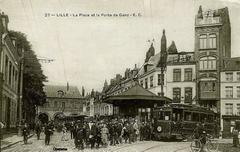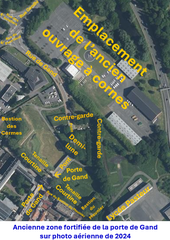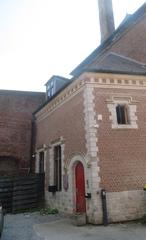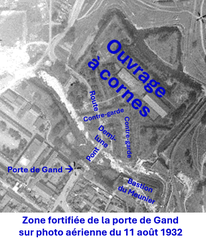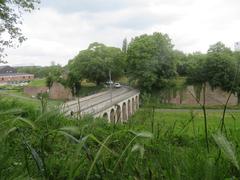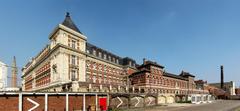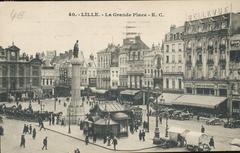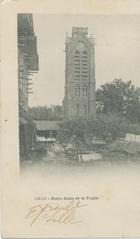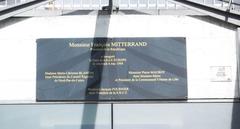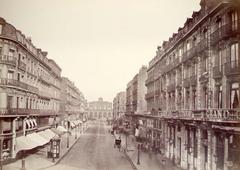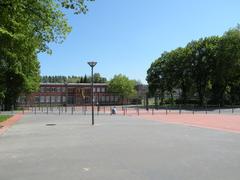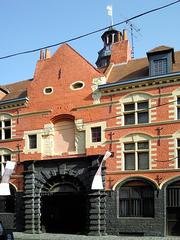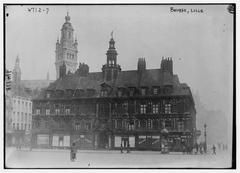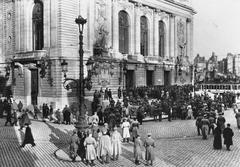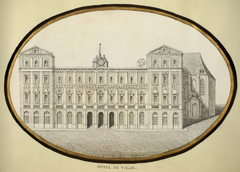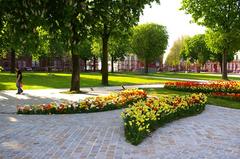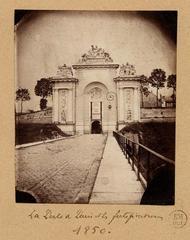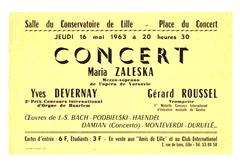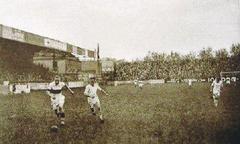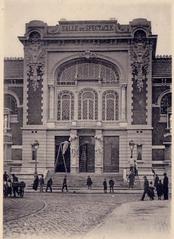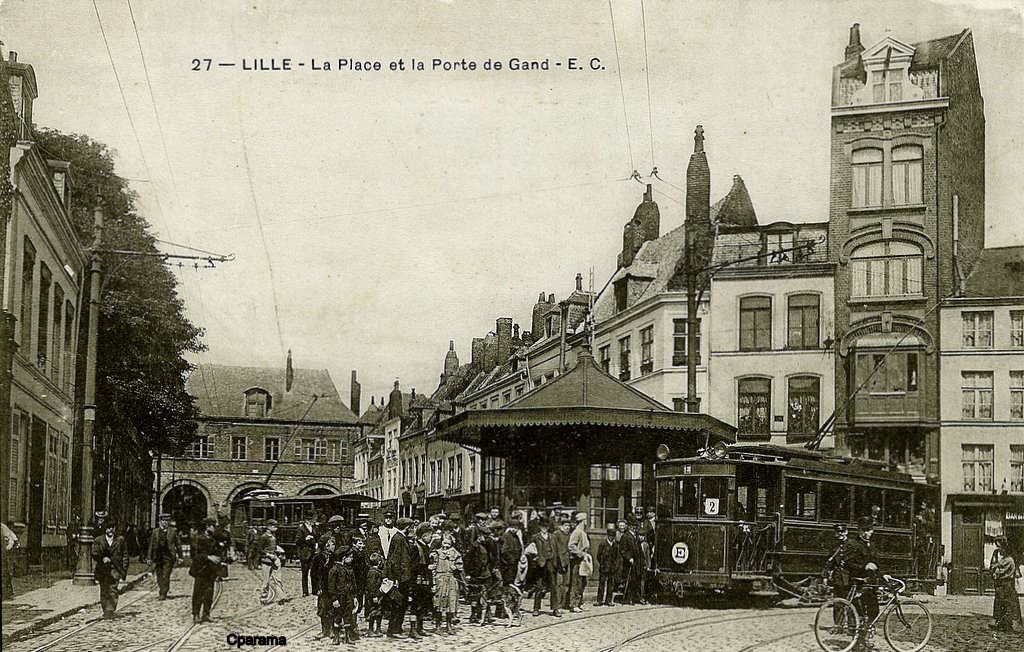
Comprehensive Guide to Visiting Rue de Gand, Lille, France
Date: 24/07/2024
Introduction
Welcome to Rue de Gand, a historic gem nestled in the heart of Vieux-Lille, France. This enchanting cobblestone street offers visitors a unique blend of architectural beauty, rich history, and vibrant modern culture. Spanning approximately 650 meters from Place Louise de Bettignies to the historic Porte de Gand, Rue de Gand is renowned for its significant contributions to Lille’s heritage. Initially known as Rue Saint-Vital before 1617, the street was later renamed Rue de la Magdeleine following the construction of the Porte de la Magdeleine (Good Morning Lille). The French Revolution brought further changes, giving the street its current name, Rue de Gand, which reflects the broader historical and cultural shifts of the era (Becoming Carmen). Today, Rue de Gand stands as a testament to Lille’s medieval past, showcasing a harmonious blend of Flemish and French architectural influences. This guide aims to provide comprehensive information for visitors, including historical insights, architectural highlights, travel tips, and more, ensuring an enriching experience for all who venture down this remarkable street.
Table of Contents
- Introduction
- Historical Background
- Architectural Significance
- Visitor Information
- Cultural and Social Hub
- Historical Monuments and Protected Buildings
- The Influence of Street Art
- Historical Transportation
- Preservation and Modernization
- FAQ
- Conclusion
Historical Background
Early History and Evolution
Rue de Gand, located in the heart of Vieux-Lille, is steeped in history and architectural charm. This cobblestone street, measuring approximately 650 meters, stretches from the bustling Place Louise de Bettignies to the historic Porte de Gand. The street’s origins date back to before 1617 when it was known as Rue Saint-Vital. Later, it was renamed Rue de la Magdeleine following the construction of the Porte de la Magdeleine, a significant expansion in the area (Good Morning Lille).
Post-Revolutionary Changes
The French Revolution brought about numerous changes, including the renaming of streets. Rue de la Magdeleine was renamed Rue de Gand, reflecting the broader historical and cultural shifts occurring in France at the time. The street’s name, Rue de Gand, is derived from the nearby Porte de Gand, a gate that once formed part of Lille’s defensive walls. Although the old city walls have long since disappeared, the gate remains a preserved historical monument, standing as a testament to Lille’s medieval past (Becoming Carmen).
Architectural Significance
Rue de Gand is renowned for its architectural diversity and historical buildings. Among the notable structures is the imposing building at 31 Rue de Gand, which is protected and classified as a historical monument. This building, along with others on the street, showcases the rich architectural heritage of Lille, blending Flemish and French influences. Another significant building is the “Hôtel Madre,” an 18th-century mansion located at 23 Rue de Gand, which adds to the street’s historical charm (Good Morning Lille).
Visitor Information
Visiting Hours
Rue de Gand is accessible to visitors 24/7; however, the best time to visit is during the day when the shops, restaurants, and cafes are open. Most establishments start their day at around 10 AM and close by midnight.
Tickets and Guided Tours
No tickets are required to stroll along Rue de Gand. However, some of the historical buildings and guided tours may have a fee. Check local tour operators for guided tour prices and availability.
Travel Tips
- Best Time to Visit: Spring and summer offer the most pleasant weather for walking and exploring.
- Getting There: Rue de Gand is easily accessible by public transport. The nearest metro station is Rihour.
- Nearby Attractions: Don’t miss the Grand Place, Lille Cathedral, and the Old Stock Exchange, all within walking distance.
- Accessibility: The cobblestone street may be challenging for those with mobility issues, so plan accordingly.
Cultural and Social Hub
Today, Rue de Gand is one of Lille’s most vibrant and dynamic streets, lined with a plethora of restaurants, bars, and cafes. This lively atmosphere makes it a popular destination for both locals and tourists. The street’s slight incline is a unique feature in Lille, a city known for its flat terrain. This incline, combined with the cobblestone paving, adds to the street’s distinctive character and charm (Good Morning Lille).
Historical Monuments and Protected Buildings
Rue de Gand is home to several protected buildings and historical monuments. One of the most notable is the yellow house at number 49, which stands out for its unique color and architectural style. These buildings are not only significant for their historical value but also for their contribution to the street’s aesthetic appeal. The preservation of these structures ensures that Rue de Gand retains its historical charm while continuing to evolve as a modern social hub (Good Morning Lille).
The Influence of Street Art
In addition to its historical and architectural significance, Rue de Gand has also embraced modern cultural elements, such as street art. The renowned street artist Invader has created one of his famous mosaics on this street, adding a contemporary touch to the historical setting. This blend of old and new highlights the dynamic and evolving nature of Rue de Gand, making it a unique destination in Lille (Good Morning Lille).
Historical Transportation
Historically, Rue de Gand played a significant role in Lille’s transportation network. The old tramway of Lille once traversed this street, connecting various parts of the city and facilitating the movement of people and goods. This historical aspect adds another layer of significance to Rue de Gand, illustrating its importance in the city’s development and growth over the centuries (Good Morning Lille).
Preservation and Modernization
Despite the modern developments and the bustling social scene, efforts have been made to preserve the historical integrity of Rue de Gand. The street’s protected buildings and historical monuments are maintained to ensure that they continue to reflect the rich history and cultural heritage of Lille. This careful balance between preservation and modernization allows Rue de Gand to remain a vibrant and historically significant part of the city (Good Morning Lille).
FAQ
Q: What are the visiting hours for Rue de Gand?
- A: Rue de Gand is accessible 24/7, but the best time to visit is during daylight hours when shops and cafes are open.
Q: Are there any ticket fees to visit Rue de Gand?
- A: No tickets are required to visit the street itself, but some historical buildings and guided tours may have fees.
Q: How can I get to Rue de Gand?
- A: The street is easily accessible by public transport. The nearest metro station is Rihour.
Q: What nearby attractions should I visit?
- A: Nearby attractions include the Grand Place, Lille Cathedral, and the Old Stock Exchange.
Conclusion
Rue de Gand is a microcosm of Lille’s rich history and cultural evolution. From its early beginnings as Rue Saint-Vital to its current status as a vibrant social hub, this street offers a unique glimpse into the past while embracing the present. Whether you’re exploring its historical buildings, enjoying a meal at one of its many restaurants, or simply taking in the atmosphere, Rue de Gand promises a memorable experience. Don’t forget to check out the nearby attractions and perhaps join a guided tour to fully appreciate the history and charm of this remarkable street.
Ready to explore more of Lille? Download our mobile app Audiala for more travel tips, and don’t forget to follow us on social media for the latest updates!
References
- Good Morning Lille, n.d., https://www.goodmorninglille.org/blog/rue-de-gand-lille
- Becoming Carmen, n.d., https://www.becoming-carmen.com/destinations/france/lille
- Wikipedia, n.d., https://fr.wikipedia.org/wiki/Rue_de_Gand
- Lonely Planet, n.d., https://www.lonelyplanet.com/articles/what-to-do-in-lille
- Explorial, n.d., https://explorial.com/exploring-the-charms-of-lille-a-guide-to-frances-city-of-art-and-history/
- Wanderlust Marriage, n.d., https://wanderlustmarriage.com/lille-france-great-day-trip-brussels/
- Come Ama Viaja, n.d., https://comeamaviaja.com/en/things-to-do-in-lille-france/
